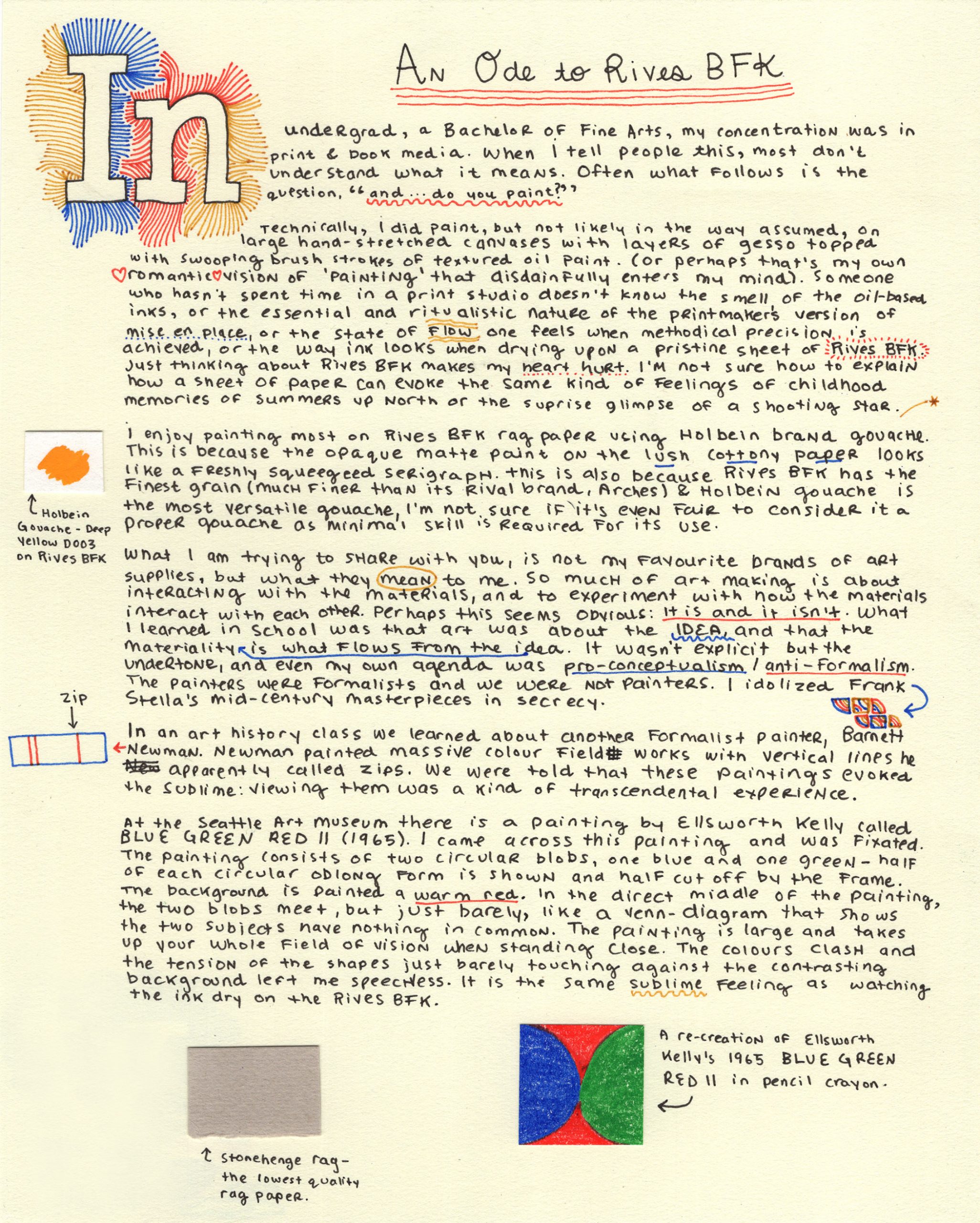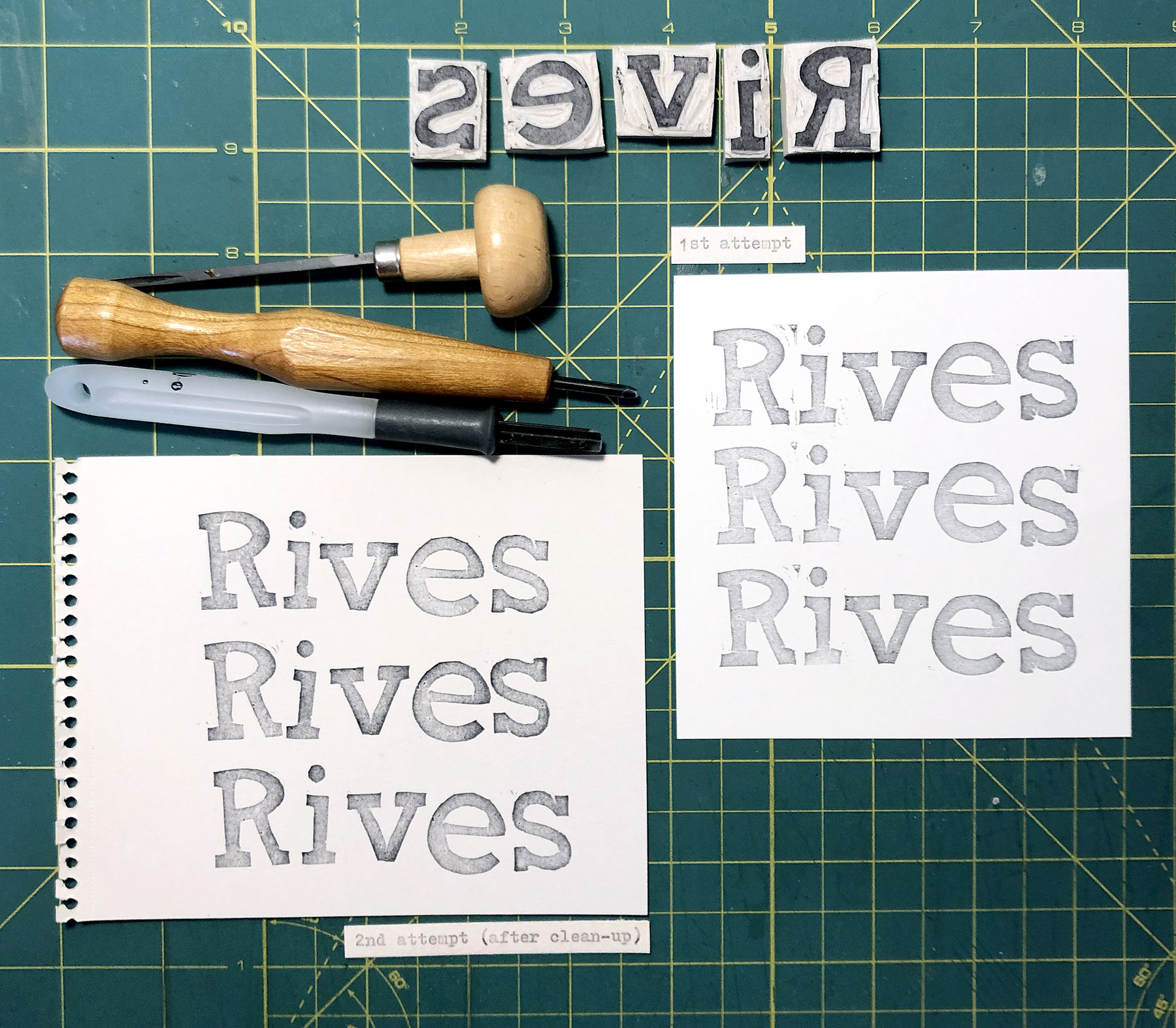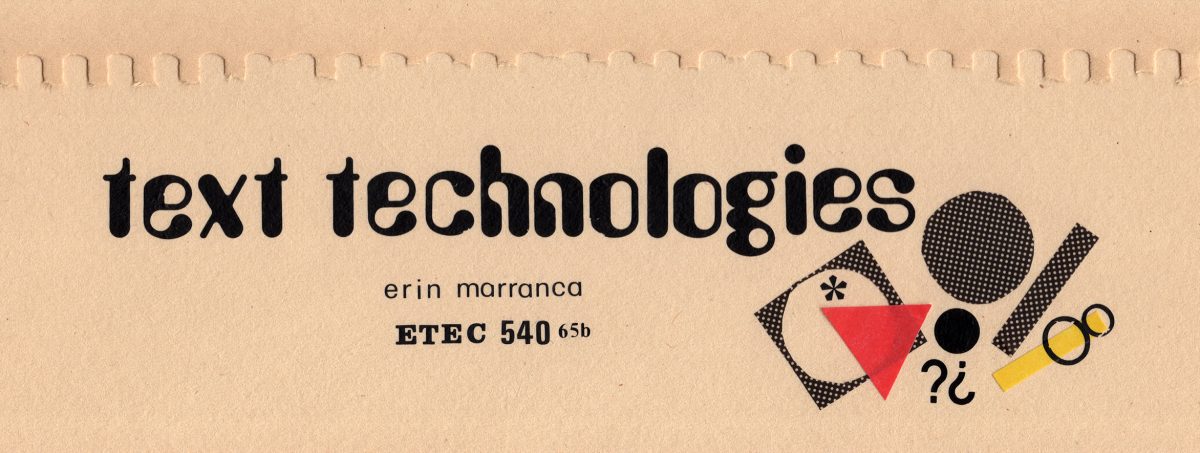
Manual Script:
With a background in print and book media, this week’s course content and task resonated strongly. I do keep a journal, and I do handwrite letters to friends – in fact, I have handwritten multiple books! (To be fair, they are small, self-published zines, consisting of only 14 pages and 18 pages). To me, the task of writing a 500-word paper by hand was exciting, and perhaps something I would have done in my downtime, for fun. Sure, my hand cramped and my hunched neck and back grew increasingly sore, but it was only one page, and I am well-accustomed to spending hours crafting small, tediously detailed creations. With this in mind, I can imagine a life dedicated to scribing entire manuscripts, with a quill pen and calligraphic and illuminated elements, day in and day out, in the cold and in dim lighting would be physically excruciating and would result in chronic pain and bodily disfigurement. Yet in less extreme ways, my office job has resulted in chronic pain and possible bodily disfigurement. It wouldn’t be a surprise if I learned I was a monastic scribe in a past life.
I admit, in an attempt to improve upon the meandering nature of last week’s task, and to stave off the ever-looming carpal tunnel syndrome in my right wrist, I pre-wrote Ode to Rives BFK on Microsoft Word, which may have diminished the authenticity of the experience, but did help with keeping my mistakes minimal. The few mistakes I made, I neatly crosshatched over, like skilled darning woven into a loved clothing garment – I like when the mistakes are left visible. I also included an Illuminated first initial (or actually, the whole word,) and marginalia. I am constantly flourishing readings and notes with marginalia, it is a regular element of my personal correspondence, and I even created an annotated book based on marginalia in a re-publishing workshop with artist Arnaud Desjardin. I consider the hyperlinking of text to be the modern-day equivalent to marginalia, like marginalia it says: I am writing this, but all of these other thoughts and past experiences are informing what I am trying to relay here, and if you really want to understand my thought process you may want to explore these connections further.
In our modern world, there is a place for both hand and digital forms of writing as they serve different purposes. If I want to write well, I need to use a word processor on my computer. I am not naturally a skilled writer and spend a lot of time wordsmithing and re-working sentence structure. When I send people hand-written letters, they look and feel special, but the content is less succinct. Handwriting is different – it is more exploratory, and that exploration or process work is left visible, and forms part of the whole – it is not finely crafted, revised and edited as is the expectation with digital text, it is closer to a direct reflection of one’s stream of consciousness.
* * *

Potato Lino Printing:
I know it was not necessary for me to complete this task, but I wanted to! Unfortunately, I didn’t have any potatoes on hand, but I did have relief carving tools and Speedy-Cut lino. I drew outlines of the letters (based on Rockwell typeface) on paper. I knew the difficult part would be to transfer the letters backwards onto the lino. First, I went over the letters in a soft pencil, then I placed them pencil-side down on the lino and used the pencil to apply pressure to the whole back of the paper. This allowed the outline of the pencilled letter to transfer onto the lino. (I assume this process would not have worked well on a wet potato). I then carved out the negative space of my backwards letters. The whole process took me the length of two episodes of Felicity, which I am currently binging. I used a stamp pad to print a first attempt, cleaned up my matrices by cutting away the excess lino, then re-printed a second, cleaner attempt.
Similar to manual script, this process reveals that there is a practical reason for why we resort to mechanized methods of writing in our modern lives. In this case, we simply don’t have the time to hand-print everything we wish to reproduce.
When it comes to creating physical art works, I always try to find ways to incorporate text in a non-digital way. Rarely would I carve text out of lino (though I have done it in the past), but more often I would use existing stamp sets, Letraset, handwriting, or my typewriter (as seen in the image above). There is something about text printed off an ink jet printer, that is inauthentic, or perhaps it’s simply my aesthetic preference. I may use a computer to support the process, but ideally, all elements of the final piece are handmade.
Reference List:
Art Story Foundation. (n.d.). Barnett Newman. Retrieved February 08, 2021, from https://www.theartstory.org/artist/newman-barnett/
Marranca, E. (2015, January 25). Retrieved February 08, 2021, from https://erinmarranca.ca/
Seattle Art Museum. (n.d.). Works of: Ellsworth Kelly. Retrieved February 08, 2021, from http://art.seattleartmuseum.org/people/4930/ellsworth-kelly;jsessionid=9E24CD3AC6D0E41BF13D2DD51DAE8BCF/objects
The Solomon R. Guggenheim Foundation. (n.d.). Frank Stella – Harran II. Retrieved February 08, 2021, from https://www.guggenheim.org/artwork/4003

Hi Erin,
Oh my goodness. You took this week’s tasks to the next level. I love that you have margin art in your script and that you had professional stamp making tools on hand! Your description of the processes you took, which are much more complex and lengthy than what I did with a potato, really highlights the challenges in making neat and consistent letters.
Aww Ying, you’re so sweet! I was definitely over-excited for this task (the creativity so far in MET has been pretty limited). I checked out your potato print, and I mean, your ink blending was top notch!
Wow Erin, how creative are you?! Beautiful representations and thank you for sharing your zines with us. Love how incorporate pictures and text!